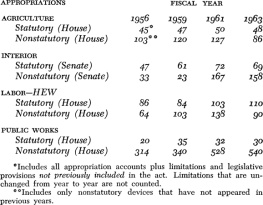Preface
THE sale of mill villages is clearly a movement of importance to a large part of the South. Its importance to the immediate locality of a sale is even clearer. No one is more aware of all this than the people who are a part of the movement. Whether they are directly concerned, like the employer who makes the decision to sell and the worker who buys, or indirectly like the school principal in the area and the casually observing citizen, they know something significant is going on. They view it with interest and talk about it with insight and understanding. I am grateful to hundreds of them for sharing with me their knowledge and observations; I am particularly indebted to mill managers and officials for taking time from busy schedules to discuss the ramifications of a complex subject and to round up for me such facts and figures as they could. Considering how long and often they have been investigated, they are remarkably patient. For many of them this was only the latest of several calls I myself have made upon them for information and cooperation.
I wish to express for myself and for the Institute for Research in Social Science thanks to the Carnegie Foundation for the Advancement of Teaching for a grant through the University Research Council which made possible the travel necessary for the study, and to Mr. I. Rogosin of the Beaunit Mills, Inc., who offered, through Mr. Forrest Shuford of the North Carolina State Department of Labor, to assist in financing its publication. I am personally indebted to my colleagues of the Institute: to Gordon W. Blackwell, Director, who accepted the project with enthusiasm equal to my own; to Rupert B. Vance who used a sharp red pencil for minor changes and his usual force and logic in suggesting major revisions; to Katharine Jocher who edited the manuscript for publication.
H.L.H.
Chapel Hill
May, 1949
CHAPTER I
Introduction: An Old Institution in a New Time
COTTON mills in the South are selling their villages. The movement began in a tentative sort of way during the mid-thirties and gained momentum until 1940. After the war it was resumed and is proceeding briskly. This development is startling because, of all industries which have resorted to company housing, in none has the custom been so general, of such long standing, and of so much public interest as in textiles. The reasons for the reversal of mill policy lie in the changes of the last two decades. The process presents an example of the break-up of an institution. If the movement continues the results will have social and economic significance for the entire Piedmont South.
The company-owned village has been a conspicuous adjunct of the cotton mill whenever and wherever this branch of textiles has sprung up. The reason is simple. Machinery was invented for spinning and weaving cotton well before that for any other important processing. In the factory system which machinery ushered in three elements were needed in abundance, capital, power, and labor. Before the day of electricity and railroads, power was the least mobile. The English mills were built at the rapids of rivers where there were few workers to be had from the sparse rural population. Operatives brought or attracted from elsewhere had no means with which to build homes, and investors in rental property had not yet found this new opening. The mills had to provide housing. When textiles rose as the pioneering factory in New England and the South the same conditions existed and the mills built villages as a matter of necessity and a matter of course.
In the other great mill areas, as the industry grew the villages were enlarged more slowly than the mill or not at all; presently they began to decline actually, and finally, well before the industry reached its peak, all but disappeared. In the South, for geographic, social and economic reasons, company housing for textile workers kept pace with the increase in mills until the middle 1920s at which time the industry reached its highest point in number of mills and, until the 40-hour two-shift week, in number of workers.
And so the cotton mill village has long been an important feature in the physical and social landscape of the South. The main outlines of the pattern were set before the Civil War by pioneering mills such as Saluda and Graniteville, South Carolina; Prattville, Alabama; Spray and Alamance, North Carolina; and many others: a few houses, a little school, a little church, a handful of families, and an owner-manager who ran the mill and community benevolently or otherwise according to his disposition. In the mill building era the pattern was repeated a thousand times, spread over the South for all to see. What Southerners saw looked good. Every phase represented an improvement over the lean and hungry past, and a promise of a fuller future: neat, pleasantly uniform cottages; rehabilitated people earning wages and creating profits; a community with the essentials of group living, such as school, church, and store; and best of all, an owner who took a fatherly interest in his people, protected them from the evils of drink by prohibiting saloons, eliminated undesirables from the community, helped the needy.
The first disapproval, beginning about 1900, was directed, not at the village, but at the mill for its child labor and long hours. Concern with these questions brought investigators, including outside reformers, to look at the village. Within a decade they were describing it as feudalistic. They said the people were tied to the mill from infancy in swaddling clothes bought on credit at the company store to death followed by burial in the company cemetery. Presently critics, mostly non-southern, attacked the unsatisfactory physical conditions of the poorer villages; defenders, mostly Southerners, countered with descriptions of the growing welfare activities of the more progressive companies.
By the 1920s censure of the village was emphasizing its social and psychological aspects: controls as related to morals, absence of freedom of occupational choice, separatism of the village as a breeding ground of class and caste. The atmosphere surrounding the subject became so charged with controversy that a new group on the scene, students seeking to study and analyze, were classed with the pros if they said a word of good, with the cons if they saw the least flaw. As a result of almost continuous discussion, the southern mill village became far better known than its prototypes in other industries. The company town of an individual firm was often just as paternalistic, but it was an occasional phenomenon in its industry and its neighborhood. The lumber towns were usually far worse physically, but they were thought of as temporary. The coal mining towns were controlled with an iron hand, but they were out of sight in the hills, and, besides, their people were often immigrants and not the purest Anglo-Saxon blood in America.





